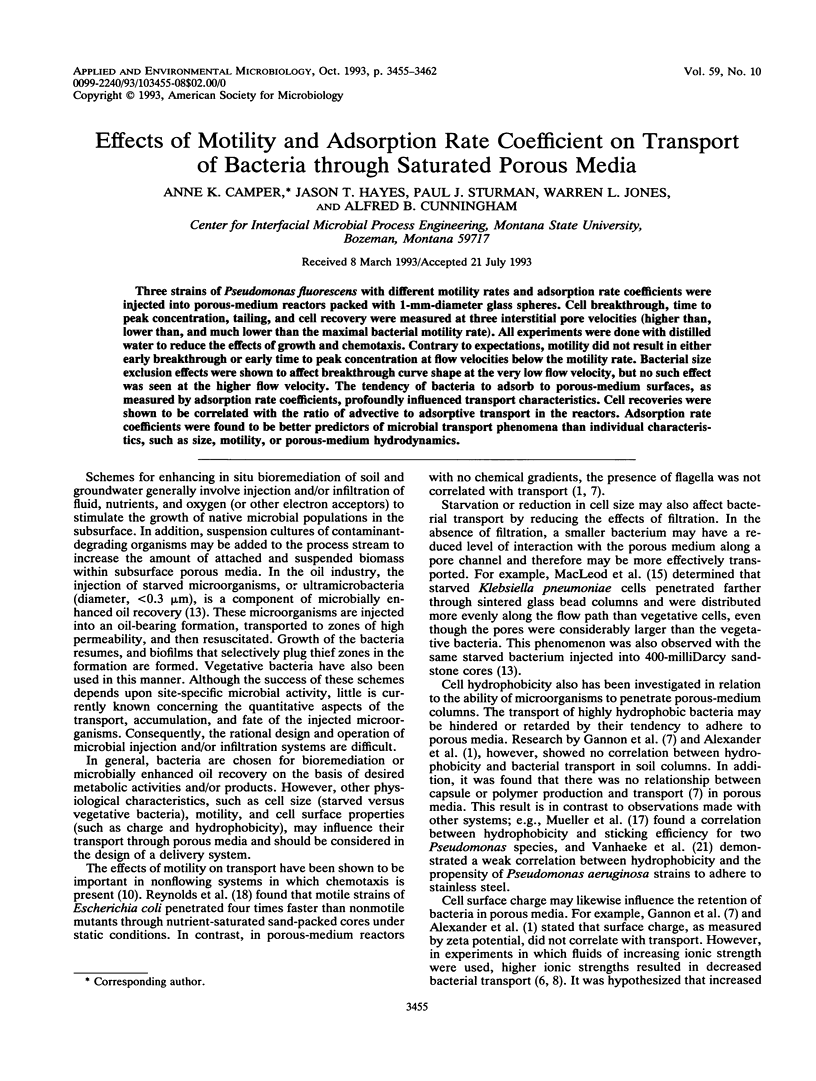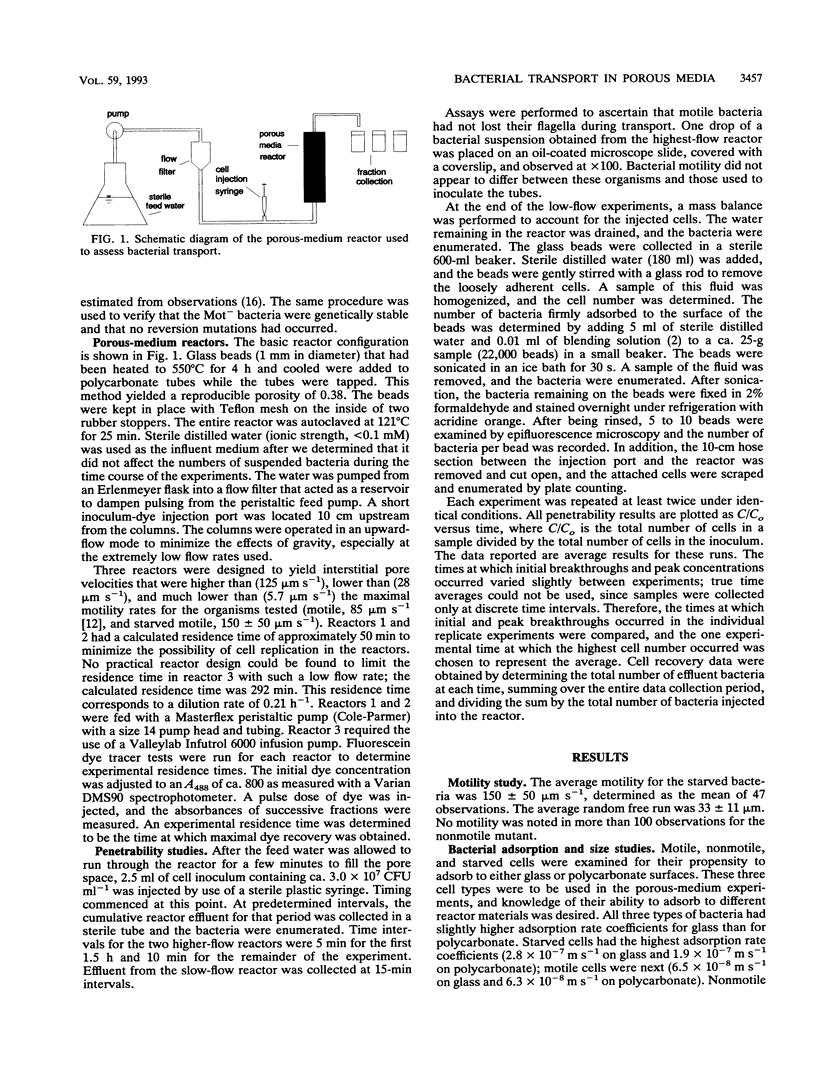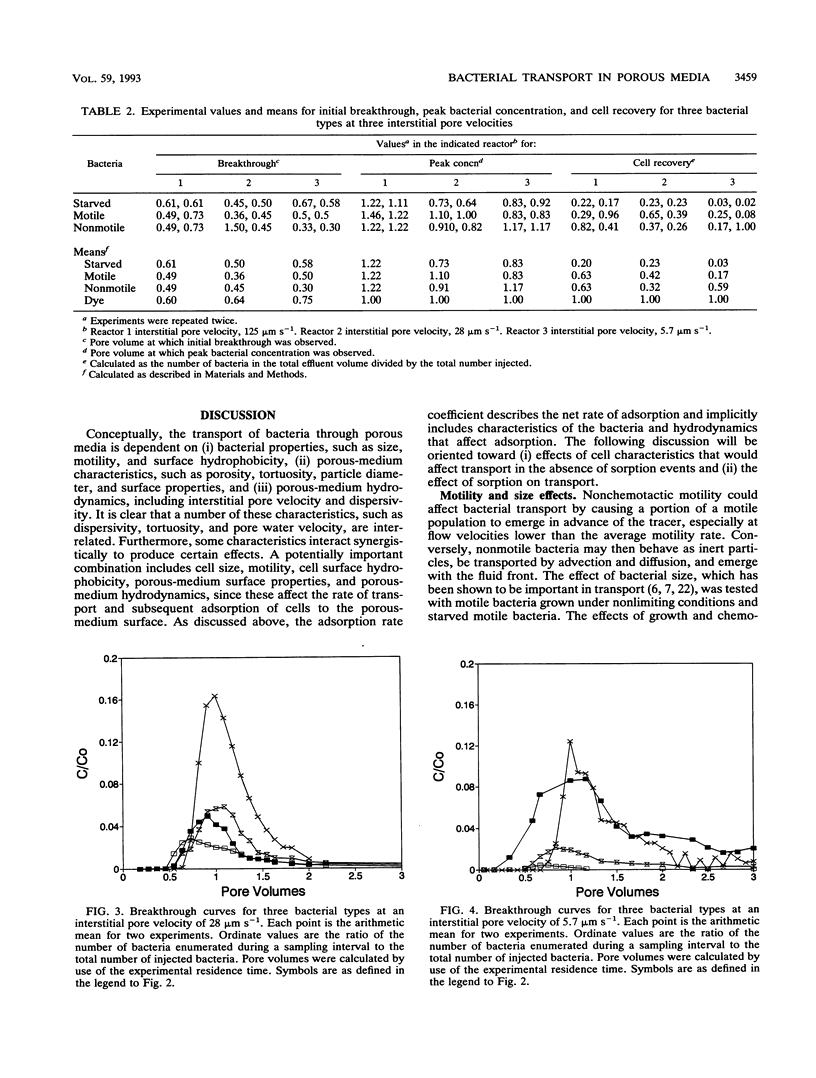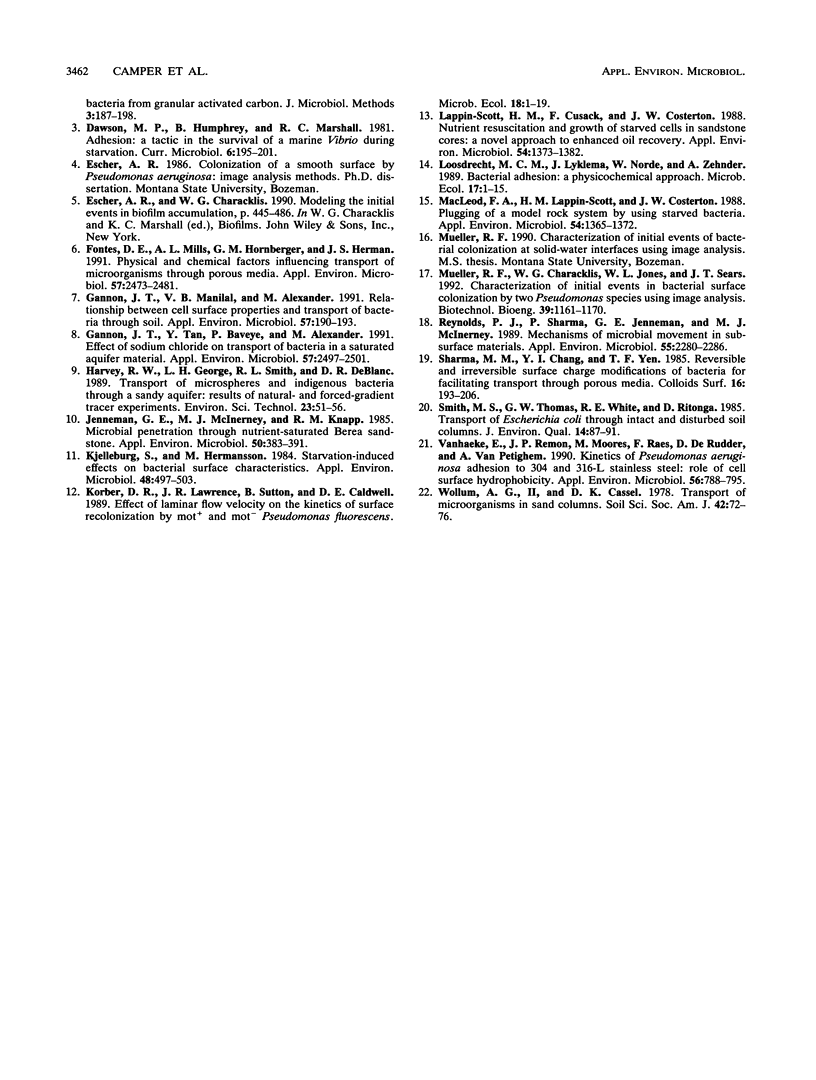Abstract
Three strains of Pseudomonas fluorescens with different motility rates and adsorption rate coefficients were injected into porous-medium reactors packed with l-mm-diameter glass spheres. Cell breakthrough, time to peak concentration, tailing, and cell recovery were measured at three interstitial pore velocities (higher than, lower than, and much lower than the maximal bacterial motility rate). All experiments were done with distilled water to reduce the effects of growth and chemotaxis. Contrary to expectations, motility did not result in either early breakthrough or early time to peak concentration at flow velocities below the motility rate. Bacterial size exclusion effects were shown to affect breakthrough curve shape at the very low flow velocity, but no such effect was seen at the higher flow velocity. The tendency of bacteria to adsorb to porous-medium surfaces, as measured by adsorption rate coefficients, profoundly influenced transport characteristics. Cell recoveries were shown to be correlated with the ratio of advective to adsorptive transport in the reactors. Adsorption rate coefficients were found to be better predictors of microbial transport phenomena than individual characteristics, such as size, motility, or porous-medium hydrodynamics.
Full text
PDF







Selected References
These references are in PubMed. This may not be the complete list of references from this article.
- Fontes D. E., Mills A. L., Hornberger G. M., Herman J. S. Physical and chemical factors influencing transport of microorganisms through porous media. Appl Environ Microbiol. 1991 Sep;57(9):2473–2481. doi: 10.1128/aem.57.9.2473-2481.1991. [DOI] [PMC free article] [PubMed] [Google Scholar]
- Gannon J. T., Manilal V. B., Alexander M. Relationship between Cell Surface Properties and Transport of Bacteria through Soil. Appl Environ Microbiol. 1991 Jan;57(1):190–193. doi: 10.1128/aem.57.1.190-193.1991. [DOI] [PMC free article] [PubMed] [Google Scholar]
- Gannon J., Tan Y. H., Baveye P., Alexander M. Effect of sodium chloride on transport of bacteria in a saturated aquifer material. Appl Environ Microbiol. 1991 Sep;57(9):2497–2501. doi: 10.1128/aem.57.9.2497-2501.1991. [DOI] [PMC free article] [PubMed] [Google Scholar]
- Jenneman G. E., McInerney M. J., Knapp R. M. Microbial Penetration through Nutrient-Saturated Berea Sandstone. Appl Environ Microbiol. 1985 Aug;50(2):383–391. doi: 10.1128/aem.50.2.383-391.1985. [DOI] [PMC free article] [PubMed] [Google Scholar]
- Kjelleberg S., Hermansson M. Starvation-induced effects on bacterial surface characteristics. Appl Environ Microbiol. 1984 Sep;48(3):497–503. doi: 10.1128/aem.48.3.497-503.1984. [DOI] [PMC free article] [PubMed] [Google Scholar]
- Lappin-Scott H. M., Cusack F., Costerton J. W. Nutrient resuscitation and growth of starved cells in sandstone cores: a novel approach to enhanced oil recovery. Appl Environ Microbiol. 1988 Jun;54(6):1373–1382. doi: 10.1128/aem.54.6.1373-1382.1988. [DOI] [PMC free article] [PubMed] [Google Scholar]
- Macleod F. A., Lappin-Scott H. M., Costerton J. W. Plugging of a model rock system by using starved bacteria. Appl Environ Microbiol. 1988 Jun;54(6):1365–1372. doi: 10.1128/aem.54.6.1365-1372.1988. [DOI] [PMC free article] [PubMed] [Google Scholar]
- Reynolds P. J., Sharma P., Jenneman G. E., McInerney M. J. Mechanisms of microbial movement in subsurface materials. Appl Environ Microbiol. 1989 Sep;55(9):2280–2286. doi: 10.1128/aem.55.9.2280-2286.1989. [DOI] [PMC free article] [PubMed] [Google Scholar]
- Vanhaecke E., Remon J. P., Moors M., Raes F., De Rudder D., Van Peteghem A. Kinetics of Pseudomonas aeruginosa adhesion to 304 and 316-L stainless steel: role of cell surface hydrophobicity. Appl Environ Microbiol. 1990 Mar;56(3):788–795. doi: 10.1128/aem.56.3.788-795.1990. [DOI] [PMC free article] [PubMed] [Google Scholar]


